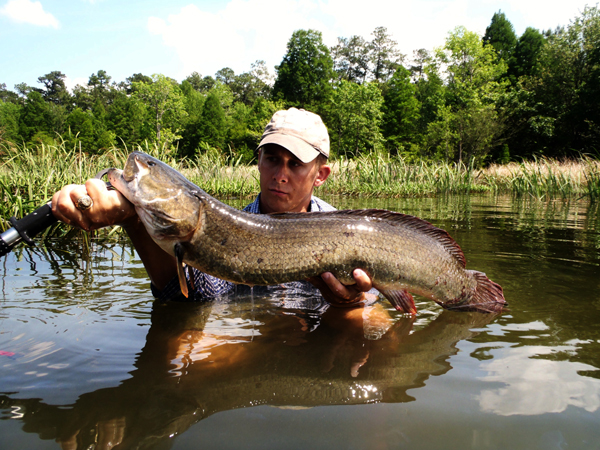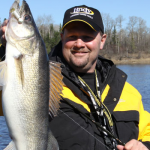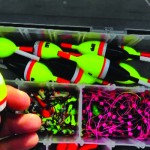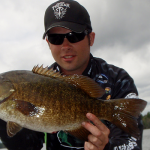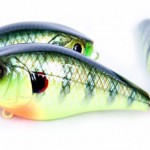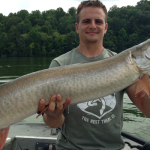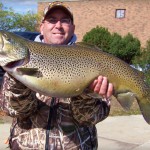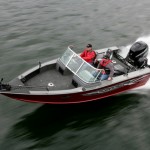By: David Graham – Date Posted: May 11, 2011
One of the most intriguing things about having a non-species specific approach to angling is the challenge of not merely dedicating your time and effort to become a master of one species, but a combined level of moderate skill culminating in an overall mastery of all that makes an angler, a complete angler. I have always tried to divide my time during the course of each year to pursue different species of fish, and over the past ten years or so I have had such an outstanding variety of experiences, both in victory and defeat which I will never forget.
Fishing a variety of species for so many years has familiarized me with the different manner in which many fish attempt to elude capture. Almost without exception, every species has its own battle tactics.
An experienced angler may often recognize what he has hooked before ever seeing the fish surface, simply based on the ‘feel’ of the fight. Tit for tat, equivalent retaliation is made while playing in a fish based off of its direction and momentum. Whether pursuing fish that rely on speed, agility, cover and concealment, or raw power; most fish seem to rely on particular and identifiable methods of evasive maneuvering.
Perhaps it is this variety that makes multi-species fishing most intriguing, but what if we as anglers could take our preferred characteristics of our favorite fish and puzzle them together into the ultimate fish?
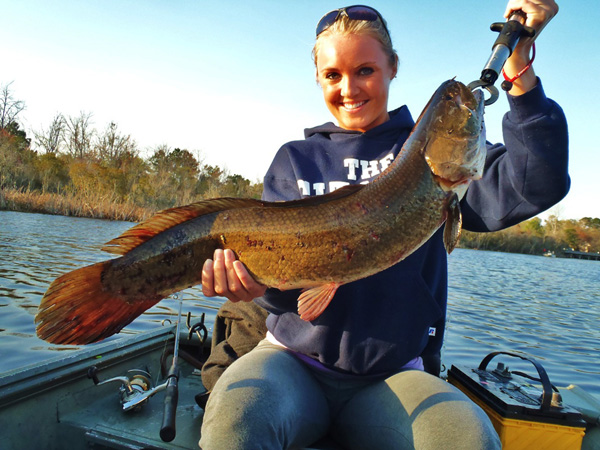
There is a creature lurking in the shallow weedy backwaters of the eastern United States that might fit the bill; a Frankenstein of fish, and a creature which is so unpredictable, and so ferocious in battle that more often than not it leaves anglers scratching their heads in awe at their broken steal leaders, busted reel gears, and crushed hard plastics.
Ladies and gentlemen, I present to you the little understood and often scorned bowfin.
In all my years of pursuing large fish, it is not the species that grow to enormous size which have captivated me most. No, I have spent more hours on the losing end of the water chasing a fish that seldom exceeds ten pounds, but is so violent, so unpredictable, and so versatile that I can honestly say it singlehandedly changed me as an angler.
The bowfin has been called many things such as mudfish, dogfish, cypress trout, grinnel, lawyer, and choupic. Call it what you will, but this fish, despite its sporting qualities is perhaps the single most under-appreciated, and least understood fish in all of North America. It is a species that has subjected my conscience as a fisherman to such torment and frustration that I cherish each punctuated incident of success more so even than personal bests of more easily attainable species. It boggles the mind that a fish which can grow to twenty pounds, fights so hard, and can be taken on artificials has been largely frowned upon by the fishing community, and it has been a tremendous point of frustration to me as I have found continued difficulty in promoting the fish as a worthy sport fish, and essential part of its eco-system.
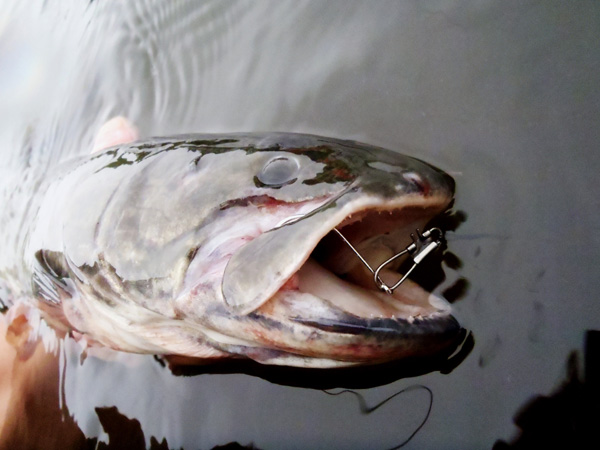
The bowfin is, in every sense of the word, a survivor. It is the last remaining member of a family of fish (Amiidae) which has extemporary history with the dinosaurs. Like gars and sturgeon, the bowfin has been swimming in our waters for hundreds of millions of years. This begs the question as to why many anglers seem to believe that a fish which has endured long before today’s most popular game species ever emerged could possibly have a negative impact on our most popular fisheries.
If species like largemouth bass were ever able to climb the evolutionary ladder during the long established existence of bowfin in the first place, it should be clear that the bowfin does not negatively affect or out compete with more popular fish species in such a manner that they should deserve the scorn and disdain so often displayed by anglers who incidentally discover a bowfin at the end of their line.
Upon an initial ‘up close’ look at a bowfin, the primitive structure of the fish is instantly evident. These are the same deep black eyes that once stared at long-ago prehistoric creatures that we can scarcely imagine. To look into the eyes of a bowfin is like looking into a window to the Jurassic world.
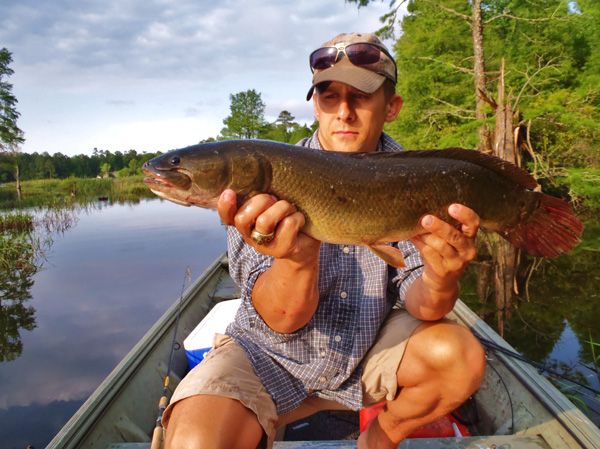
To hold one of these creatures in your hands is to experience an indescribable sense of awe that should engage your conscience unlike any other fish. The bowfin is an exceptionally well-equipped species of fish which seems designed to endure the harshest of environments.
Bowfin have superior camouflage for the muddy, weedy, dark waters in which they flourish. Equipped with a swim bladder which operates almost as a primitive lung, the bowfin is capable of gulping air from the surface in standing water which sees depleted oxygen content. This is perhaps the one angle from which fisherman targeting these stealthy predators can visually approach these fish.
Locating the bowfin is simply a matter of patient observation of the water’s surface. A bowfin, despite its stealth, will eventually reveal its position as it rises to the surface for a gulp of air. Its sleek cylindrical body scarcely tapers from one end to the other, making the bowfin a solid piece of muscle connected to a rounded tail which operates much like a powerful oar. This combination offers optimum power and propulsion through the water and allows the fish to make disproportionally powerful runs for even the smaller specimens.
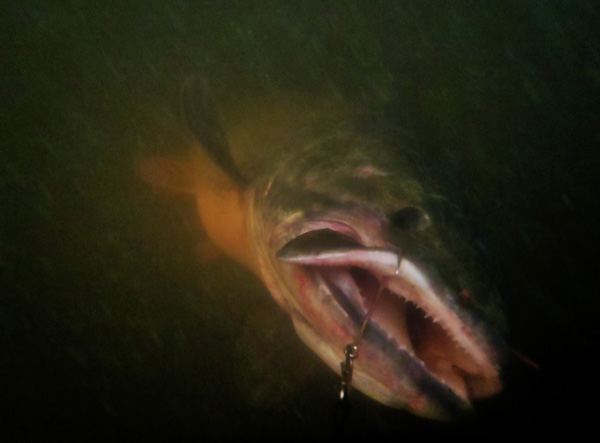
The bowfin also has a characteristic ‘false eye’ black spot on its caudal peduncle, which during its juvenile years may help the young bowfin escape predators. The black spot is often lost or reduced in females, but remains prominent in males. The bowfin’s most distinctive feature, however, is its long, spineless dorsal fin which encompasses more than half its body length. While hovering in place, the bowfin’s long dorsal ray appears to writhe with the rhythm of a snake.
The serpent-like head of the bowfin is undoubtedly the business end. The bowfin has exceptionally powerful jaw pressure, and a mouth lined with very sharp teeth. Any angler who values the use of his thumb would be wise not to handle this fish as he would a largemouth bass. Handling the bowfin is a chore, since its body is very slick and soft, with no hard, bony spines and little to grip.
Bowfin never seem to slow their pace from the hookset to the climax of the battle. They will continue to fight on the land, or in the boat, making the experience as a whole very exhausting.

The Bowfin is an exceptional predator which will feed on smaller fish, amphibians, insects, or crustaceans. They are predominantly an ambush predator which will feed opportunistically, and because of this, anglers should target shallow weedy backwaters. Successful capture of a bowfin requires tough gear, but they can be taken on much the same tackle as largemouth bass. Bowfin can also be taken on cut or live fish either from the bottom or suspended under a float. Because these fish inhabit heavily vegetated waters and will seek out cover, heavy braided line is recommended so they can be pulled from underwater snags. They can be found as far north as Ontario, and as far south as the Southern tip of Florida.
The question must be raised as to why the bowfin have somehow earned such a poor reputation. Many avid bass anglers across the Eastern United States have expressed dissatisfaction, even agitation, at discovering that an anticipated 10-pound bass was actually a three-pound bowfin.
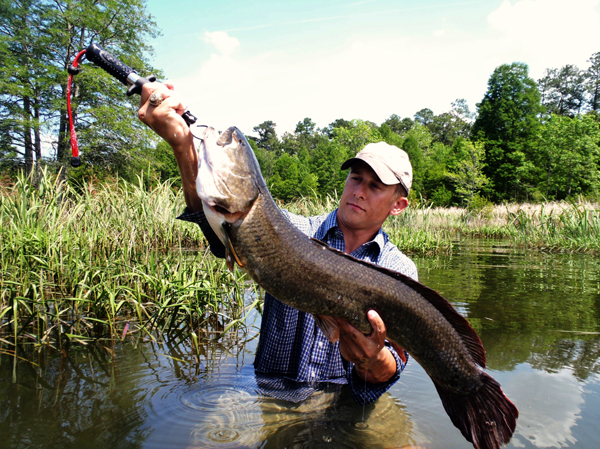
Bowfin are not particularly known for the quality of their meat; they do not possess elaborate coloration, and they prefer the weedy muddy backwaters of swamps. These things are indisputable, yet there should be a primal instinct in all serious anglers, I believe, that leads to joy in the pursuit of a fish which requires us to dredge through mud, get a little dirt under our nails, and stand toe-to-toe in a no- holds barred slugfest with the big uglies of the fish world.
Specifically targeting these fish requires a strong hand and a lot of guts. These fish do not inhabit trickling mountain streams or gently pluck midges or nymphs from the surface. They are going to rip, tear, bust, and destroy everything in your tackle box in a manner that is anything but graceful. When you gear up for a day in pursuit of bowfin, you can rest assured you are going off to war.
Considering the essence of fishing and the thrills that it provides, there is much that can be said about bowfin. Whether it be in scorn or praise, we as fisherman are as unique in our differences individually as the fish we pursue, and yet at the core of all fisherman there is a thirst for adventure, and the thrill of the catch which we all share despite our different philosophies and beliefs, which I am certain the experience of catching a bowfin satisfies in such a way that this fish should be considered more than worthy of great recognition, exposure, and respect.
